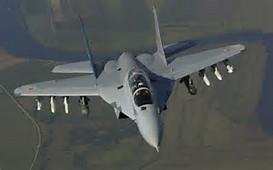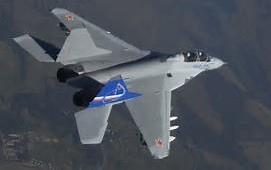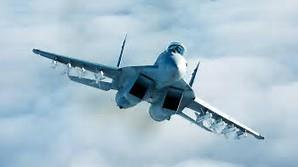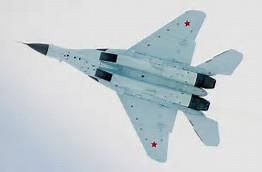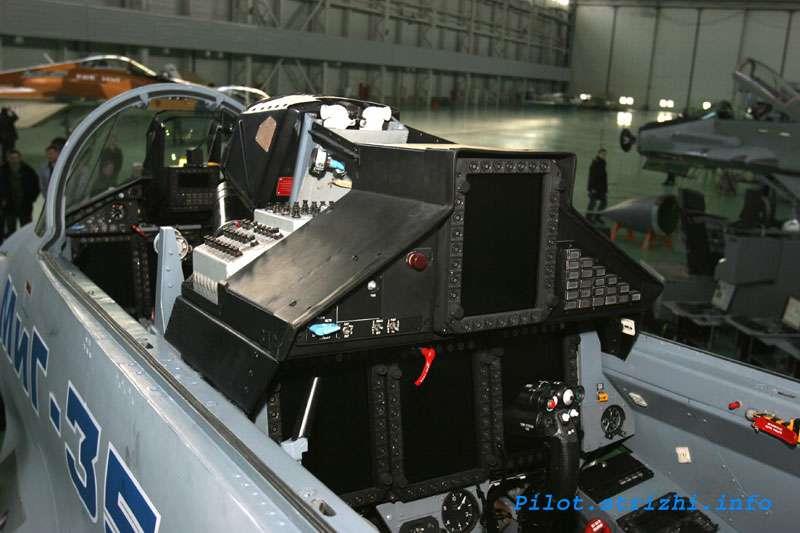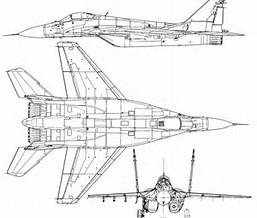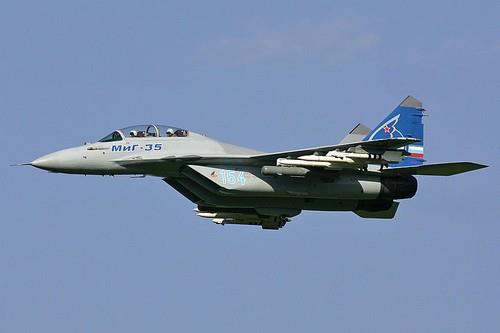S'sonic
Stealth
Menu
A free template by Lucknowwebs.com for WYSIWYG WebBuilder 8
Powered by Sispro1-S
Nigel G Wilcox
Paragon Of Space Publication
© Copyright Reserved - United Kingdom
Ideal Screen Composition 1024 x 768
SITEMAP
PSEUDO SCIENCE
SCIENCE RESEARCH
ABOUT
Desk
Supersonic
Stealth
Study
Menu
MAIN INDEX
Fastest Air Planes
Space
Transport
Menu
Mikoyan MiG-35
The Mikoyan MiG-35 is a Russian multirole fighter that is a further development of the MiG-29M/M2 and MiG-29K/KUB fighters. It is classified as a 4++ generation jet fighter by Mikoyan. The first prototype was a modification of the aircraft that previously served as a MiG-29M2 model demonstrator. In 2009, ten prototypes had been built for field trials.
The Russian fighter MiG-35 - stands as the ultimate evolution of the MiG-29 Fulcrum fighter series. The MiG-35 has vastly improved avionics and weapon systems, especially the new AESA radar and the distinctive designed OLS, relieves the aircraft from relying on GCI (ground-controlled interception) systems and enables it to conduct independent multi-role missions. According to Russian military, the new MiG-35D multirole fighters as an equal to the U.S. F-35 jet fighters.
Maximum speed: 2,600 km/h (1,616 mph) Range: 1,243 mi Maiden flight: 2007 Length: 56.76 ft Wingspan: 39.34 ft Cruising speed: 1,223 km/h (759.94 mph)
Role: Multirole fighter
National origin: Russia
Manufacturer: Mikoyan
First flight: 2007
Introduction: 2018 (planned)
Status: Flight-testing/pre-series production
Primary users: Russian Air Force
Egyptian Air Force
Number built: 3 known completed by June 2010 and 2 pre-series completed by 2016
Unit cost: US$40 million
Developed from: Mikoyan MiG-29M
General characteristics
Crew: 1 or 2
Length: 17.3 m (56 ft 9 in)
Wingspan: 12 m (39 ft 4 in)
Height: 4.73 m (15 ft 6 in)
Wing area: 38 m² (409 ft²)
Empty weight: 11,000 kg (24,250 lb)
Loaded weight: 17,500 kg (38,600 lb)
Max. takeoff weight: 29,700 kg (65,500 lb)
Powerplant: 2 × Klimov RD-33MK afterburning turbofans
Dry thrust: 53.0 kN (11,900 lbf) each
Thrust with afterburner: 88.3 kN (19,840 lbf) each
Performance
Maximum speed:
At altitude: Mach 2.2 (2,700 km/h; 1,690 mph)
At sea level: Mach 1.17 (1,450 km/h; 900 mph)
Range: 2,000 km (1,240 mi; 1,080 nmi)
Combat radius: 1,000 km (620 mi; 540 nmi)
Ferry range:
With 3 external fuel tanks: 3,100 km (1,930 mi; 1,670 nmi)
With aerial refueling: 6,000 km (3,730 mi; 3,240 nmi)
Service ceiling: 19,000 m (62,340 ft)
Rate of climb: 330 m/s (65,000 ft/min)
Thrust/weight: 1.03
Maximum g-load: +10 g
Armament
Guns: 1 × 30 mm Gryazev-Shipunov GSh-301 autocannon with 150 rounds
Hardpoints: 9 hardpoints with a capacity of up to 7,000 kg and provisions to carry combinations of:
Rockets:
S-8
S-13
S-25L (LD) laser guided variant
S-25-O with fragmentation warhead and radio proximity fuze
S-24
Missiles:
Air-to-air missiles:
R-73
R-77
Air-to-surface missiles:
Kh-29L/TE
Anti-radiation missiles:
4 × Kh-31PD
Anti-ship missiles:
4 × Kh-31AD
Bombs:
KAB-500KR TV-guided bomb
KAB-500L laser-guided bomb
KAB-500S-E guided bomb
Avionics
Phazotron Zhuk-AE active electronically scanned array radar
OLS-UEM electro-optical targeting system
OLS-K electro-optical targeting system
The Mikoyan MiG-35 Fulcrum-F is set to enter testing in 2017 with deliveries to the Russian Aerospace Forces starting in 2018. Flight tests for the new advanced Fulcrum derivative-which were originally scheduled for this summer-have been pushed back due to production delays.
“Development work under contract with the Ministry of Defense on the MiG-35 is currently ongoing,” Vladimir Mikhailov, the head of United Aircraft Corporation’s (UAC) directorate of military aircraft, told the Moscow-based TASS news agency. “They are a little behind schedule because of some fault with enterprise cooperation delaying deliveries of components, but we can say that in general the problem is solved.”
However, UAC’s Russian Aircraft Corporation-MiG division expects to make up for the production delays next year. “We will catch up with the schedule in 2017,” Mikhailov said. “The will be a very brief trial of the machine since the prototype has already repeatedly proven itself. The aircraft will be supplied to the VKS [Vozdushno-Kosmicheskiye Sily] in 2018.”
UAC has not signed a production contract with the Russian Ministry of Defense. That will have to wait until the MiG-35 completes testing. However, the Russian Air Force was previously expected to buy an initial batch of thirty-seven MiG-35s. The jet is expected to become operational in 2020.
The MiG-35 is an advanced derivative of the original MiG-29. While the airframe is similar, the aircraft is practically a new design under the hood. Compared the to original Fulcrum, the MiG-35 adds a completely new fly-by-wire control system, a lighter airframe, more fuel capacity, more efficient engines and thrust-vectoring nozzles. Moreover, the Russians are developing single and two-seater versions of the jet based on the same outer mold line to maximize commonality.
More importantly, the MiG-35 will add a completely new avionics suite. The new jet will incorporate Russia’s first operational fighter-mounted active electronically scanned array radar-called the Zhuk-MA. The radar is able to track fighter-sized targets at ranges greater than 85 nautical miles.
The MiG-35 will also be equipped with a unique optical locator system (OLS)-which is a passive air-to-air electro-optical sensor that operates in both visual and infrared wavelengths. The Russians believe that the OLS sensor will be useful in countering stealthy aircraft like the F-22 and F-35. The MiG-35 will also incorporate a powerful electronic warfare suite-an area where the Russians excel.
RSK-MiG-which falls under the aegis of the United Aircraft Corporation alongside arch-rival Sukhoi-hopes to recapture some the Mikoyan design bureau’s old glory with the new advanced MiG-29 derivative. RSK-MiG’s Fulcrum product line has been overshadowed by Sukhoi’s larger and more capable Flanker series in the years since the collapse of the Soviet Union. The MiG-35 might be the RSK-MiG’s last hope of regaining some of its lost market share on the international fighter market. (Courtesy DM June 9, 2016)
